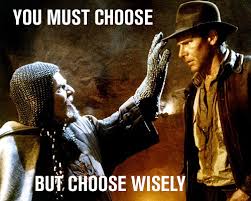After the hard work of writing, revising, and polishing a novel, writers now face the daunting choices of where and how to get it published. The debate over “Traditional” versus “Indie” publishing has been raging for years now, and the rate of change in media can make your head spin. As a sort of case study that you might helpful, I’m going to focus on my own experiences with the publication of my novels – from being published by a “Big 5” New York publisher, to Print-on-Demand self-publishing, to startup of an indie press, to joining a cooperative author-owned publisher.
 For expert discussions of the business of writing, publishing, and promotion, check out Kris Rusch blogs at www.KristineKathrynRusch.com
For expert discussions of the business of writing, publishing, and promotion, check out Kris Rusch blogs at www.KristineKathrynRusch.com
Penny Sansevieri’s website: www.amarketingexpert.com
And author-members blogging on www.bookviewcafe.com
The conclusion many writers are reaching today is that there doesn’t have to be an either/or choice between traditional publishing (submitting your novel to a large publishing house, with or without an agent) and “indie” publishing, which can range anywhere from a smaller, perhaps regional publisher taking on your book, to self-publishing via print runs, print-on-demand (POD), and/or eBooks. Many authors are now combining these outlets, weighing the relative advantages for each book. Keep your options and your mind open.
So here’s how my winding path through publishing started:
After writing my first science fiction novel as an undergraduate studying writing and literature, I sent the manuscript out to two or three of the big New York publishing houses whose imprints accepted nonagented submissions. I got rejections, one declaring that my female protagonist had “too much emotion for science fiction.”
I threw the novel into a box and went backpacking around Greece, treasure-hunting and teaching scuba in the Caribbean, and generally collecting adventures in my Hemingwayesque pursuit of writerly material.
When I touched base back in my hometown, I unearthed the manuscript and sent it out again, forgetting it had already been rejected by Ace/Berkley (now part of the Putnam group). This time a new editor there accepted it.
Sara’s Lesson One: Don’t give up. Often timing and serendipity play roles in connecting with the right outlet for your writing.
My experiences with Ace/Berkley were initially rewarding and helpful to my growth as a writer. My editor Beth Fleisher gave great editorial input, which included the challenge to cut 1/5
of the word count from my first novel, tightening it up nicely. They changed my title from Homeworld Stranger to Wild Card Run, which I wasn’t wild about, but it did tie in with my heroine’s career designing futuristic gambling games, as well as her ultimate rebellion against the ruling system.
I didn’t have much say in what happened with the novel production and promotion, since I simply signed the boilerplate contract and didn’t have an agent for the first book. Ace/Berkley now had the option on my next novel, which was fine since they had persuaded me to write a series (eventually three). They did send out review copies, and I received a rare genre review from Publishers Weekly (“Stamey puts feeling into this tale of the prodigal daughter”), a Best New Novels listing from Locus Magazine, and other nice notices for a first novel.
I printed postcards with the book cover image and blurbs, and sent them around to bookstores and review magazines, with decent but not terrific sales of the first title.
I was completely ignorant of how the industry worked, and in the 80s (yes, this is ancient history) there was no Google to search out such information. A chance encounter steered me toward my first attendance at a writer’s conference (a “Con” in the biz), where an established fellow novelist with Ace, Megan Lindholm, sat me down and gave me some wonderful advice on getting an agent, watching out for bad contract terms, and generally becoming proactive about my hoped-for writing career.
BTW, Megan, now writing as Robin Hobb, broke out a few years later into the international bestseller ranks. Check out her terrific novels!
Sara’s Lesson Two:

Ditch the myth of the writer holed up in isolation in an artsy garret. Connecting with fellow writers and readers at conferences (and now online) is educational and supportive. We all need to make connections if we want our books to be read.
Enough for today. I’ll continue my exploration, probably branching off into subtopics like learning about social media (this from a reluctantly emerging NeoLuddite computerphobe). Thanks for checking in, and keep reading books!

Timely words. I spent the weekend at ConDFW and we are all in this same boat together. There are those who are virulently indie, virulently small pub, etc. There is no one path anymore, but we aren’t alone, no matter which path we walk.
Thanks, Pooks. That’s why I’m so happy to be joining this supportive publishing group of savvy writers. We can all rise together.
-Sara